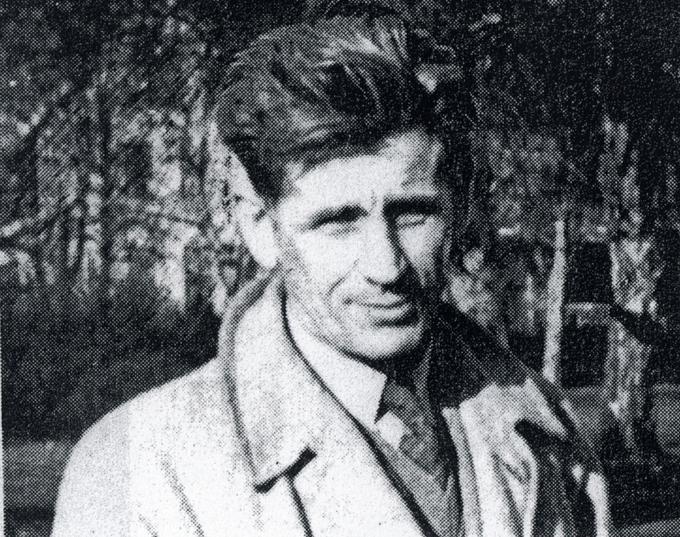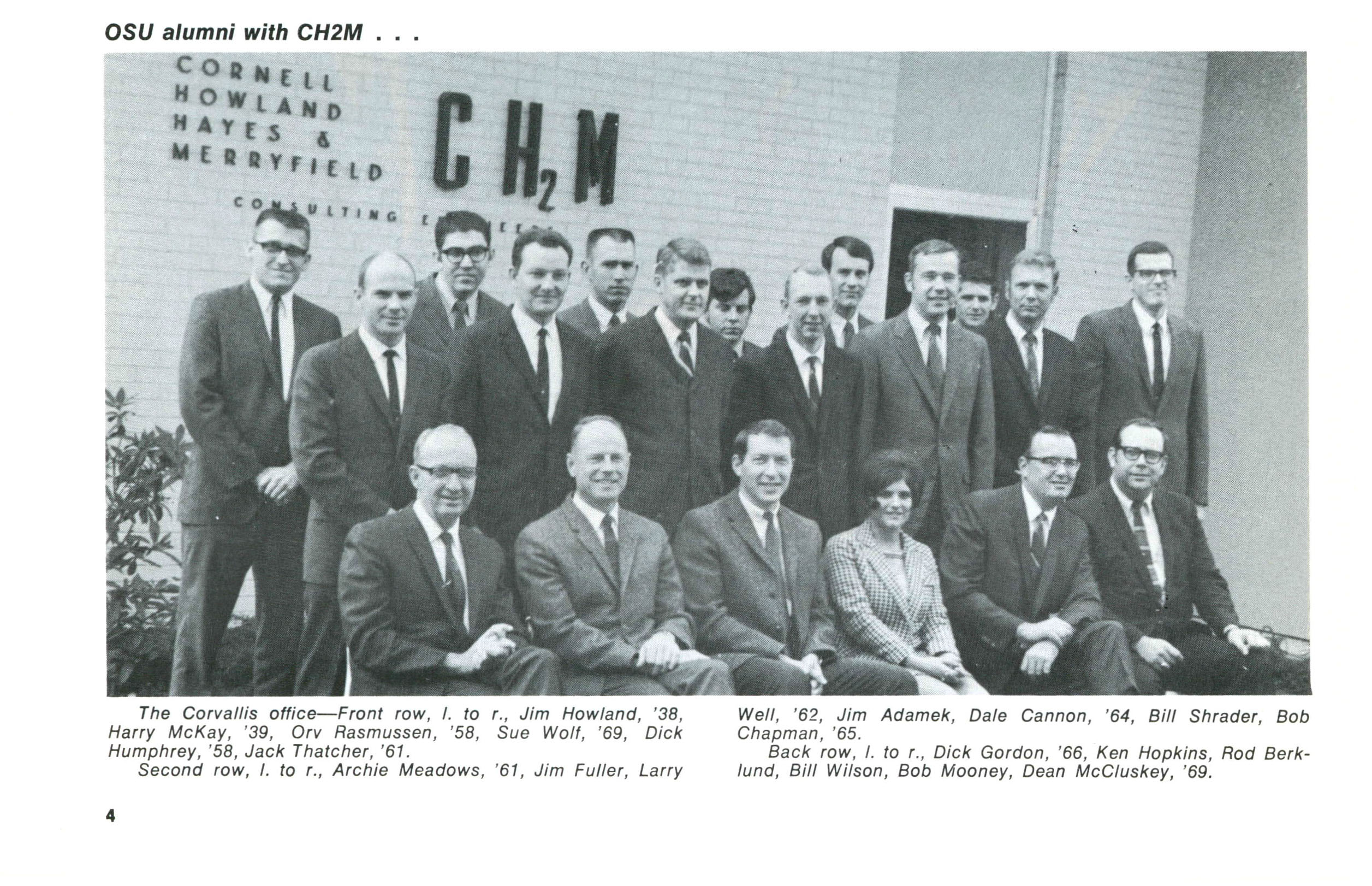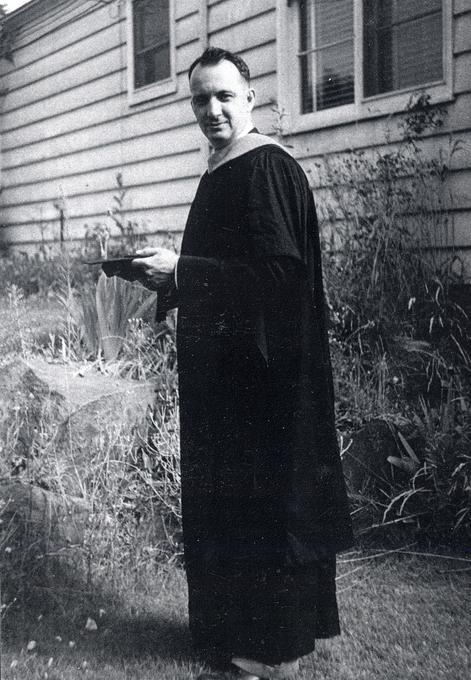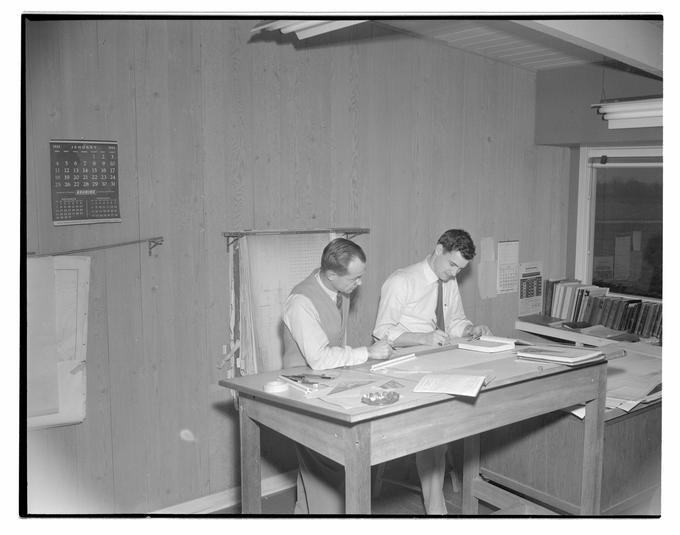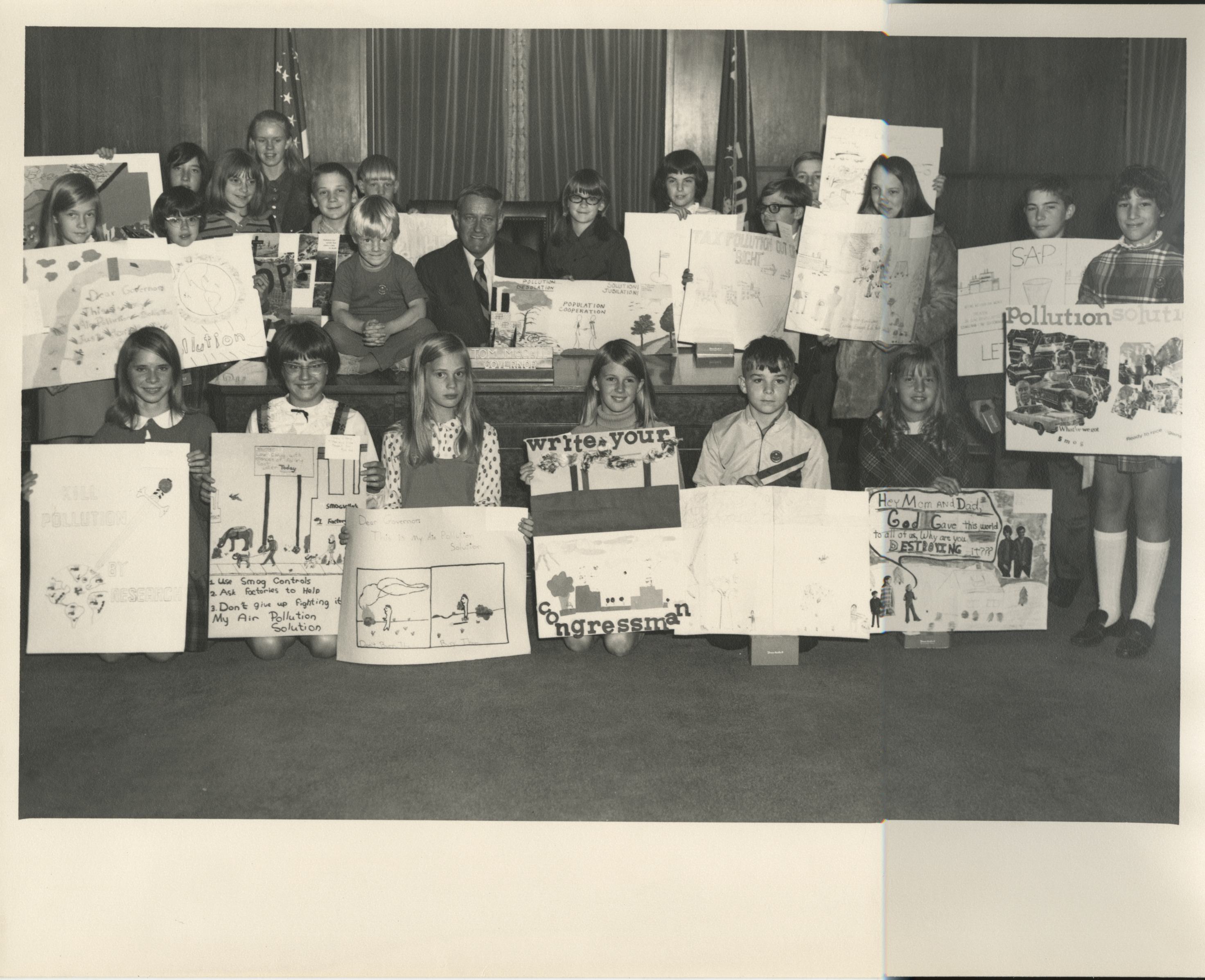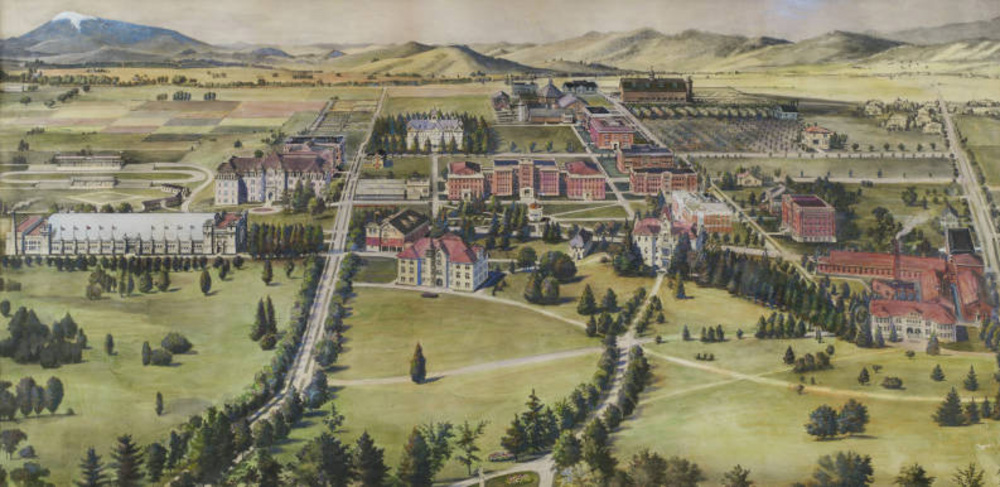CH2M Hill was perhaps the most successful engineering concern established in Oregon. Founded by an engineering professor at Oregon State College (now Oregon State University) and one of his students, at its peak the firm was among the five largest consulting companies in the United States. Broad in its purview and largely employee-owned, the company grew to the point where, in 2016, it earned $5.24 billion in gross revenues from an international portfolio of clients seeking assistance with engineering, design, management, and construction projects.
CH2M traces its origin to Cornell and Merryfield, a professional partnership launched in 1945 above the Albright & Raw Rexall drugstore in downtown Corvallis. Within a year, two additional partners had been added, and the Cornell, Howland, Hayes and Merryfield Consulting Engineers enterprise was born. By 1947, the company had forty-one employees.
It was no accident that the company’s headquarters were in a small college town: three of its founding partners—Holly Cornell, Jim Howland, and Burke Hayes—were graduates of the School of Engineering at Oregon State. The fourth partner, Fred Merryfield, was a professor of civil engineering at Oregon State from 1927 to 1966. Merryfield (1900-1977) retired from the firm in 1970, Cornell (1932-1997) and Hayes (1912-2007) in 1980, and Howland (1916-2008) in 1982.
The initial focus of CH2M—as the firm was rechristened in 1950, from the initials of the founders’ last names—was sanitary engineering, with an emphasis on developing solutions to address the polluted Willamette River. By 1948, the group had taken on two additional partners—fellow Oregon Stater Archie Rice and Kansas transplant Ralph Roderick—and within a year had completed its two hundredth project, with innovations related to sewer pumps and water treatment proving especially profitable.
CH2M grew steadily throughout the 1950s, undertaking its one-thousandth project in 1955. A Seattle office came online in 1960, an office building in Boise opened in 1961, and a Portland branch began work in 1964. By 1965, the company had completed 4,000 projects and had accrued $2 million in annual billings. The CH2M Applied Sciences Laboratory opened in Corvallis in 1968 and remained a part of the company until it was acquired by TestAmerica in 2017. The company's first international office opened in Calgary in 1978.
A major water reclamation project at South Lake Tahoe, begun in 1965, was especially consequential to the company's evolution. As the world’s first system capable of recycling wastewater to a standard approximating drinking water, the initiative made use of Clair A. Hill & Associates, an engineering firm in Redding, California. The work at Lake Tahoe and other collaborations led to a merger between the two concerns. CH2M Hill was created in 1971, with about five hundred employees.
In 1977, CH2M Hill acquired Black, Crow and Eidsness, a Florida-based firm purchased specifically to gain traction on the East Coast. Operations Management International was created in 1980 to work with wastewater clients. Later, CH2M Hill managed the cleanup of the Rocky Flats plutonium-processing plant in Colorado, a crucial entry into the nuclear sector and a precursor to 2008, when the firm took over the remediation of the Hanford Site in southeastern Washington. The firm also was hired to add a third lane to the Panama Canal, expand sewer systems in London and Singapore, relocate U.S. military bases in South Korea, and manage projects related to the 2012 Olympic games (London) and the 2022 World Cup (Qatar).
Many factors played a role in CH2M Hill's growth, including the company's ownership structure. From the beginning, employees owned essentially all of the company's stock, although no single employee—including partners—was allowed to own more than 7.5 percent of the total. Annual bonuses were issued in the form of company shares, and employees who left the firm or retired had to sell their shares back to the company. These practices ensured that the company remained in employee hands and that no individual could develop enough share-holding power to dominate the firm’s direction. The shared-ownership structure did much to maintain employee loyalty and longevity and provided a measure of financial security to many employees.
By 1983, Corvallis could no longer accommodate the company’s needs as a base of operations, and much of its executive apparatus was moved to the Denver metropolitan area, a trend that continued throughout the 2000s. The company continued to staff an office in Corvallis and make contributions to the university, including the CH2M Hill Alumni Center, a 45,000-square-foot facility that opened on the OSU campus in 1997.
By the beginning of the 1990s, the company was a leader in the environmental sector and employed over five thousand people. Perhaps most notably, CH2M Hill released its Environmental Management System in 2005, a series of universally accepted standards that provide guidance for sustainable engineering.
The emphasis that CH2M (as it was rebranded in 2015) placed on sustainability efforts, combined with its track record on water, transportation, and nuclear waste initiatives, attracted the Dallas-based Jacobs Engineering Group. More than twice CH2M’s size, Jacobs purchased CH2M in 2017 for $3.3 billion, at the time among the largest deals ever completed in the engineering sector.
The purchase came during a period of relative weakness for CH2M. Burdened by pension debt assumed by its acquisition of a British company in 2011, the firm reported a net income of $15 million in 2016, down from $80.4 million the year before. The company also took a hit in 2013 when its Hanford unit admitted to time-card fraud and agreed to pay an $18.5 million fine. Its emphasis on the privatization of municipal services drew condemnation from watchdog groups, as did safety violations at Hanford and elsewhere. Finally, a contract to expand the High Speed 2 rail network in England was terminated in March 2017 due to delays and concerns about how the company had won the bid in the first place.
With its absorption into the Jacobs Group, CH2M concluded its run as an independent company, and its legacy units subsequently focused on water, transportation, and environmental projects. As of 2018, the merged company employed over seventy-four thousand people and was propelled by more than $15 billion in annual revenue.
-
![]()
Fred Merryfield, c.1940.
Courtesy Oregon State University Libraries, MSS Merryfield
-
![]()
OSU alumni with CH2M, 1969.
Courtesy Oregon State University Libraries, Oregon Stater, Nov.-Dec. 1969
-
![]()
James Howland, c.1960.
Courtesy Oregon State University Libraries, MSS Howland
-
![]()
Bob Adams, on the right, was a draftsman for CH2M, 1953.
Courtesy Oregon State University Libraries, OSC News Bureau coll
Related Entries
-
![Department of Environmental Quality]()
Department of Environmental Quality
The Oregon Department of Environmental Quality (DEQ) administers and en…
-
![Oregon State University]()
Oregon State University
Oregon State University (OSU) traces its roots to 1856, when Corvallis …
Map This on the Oregon History WayFinder
The Oregon History Wayfinder is an interactive map that identifies significant places, people, and events in Oregon history.
Further Reading
CH2M Hill, Inc. Oral Histories, 1961-1984 (OH 019), CH2M Hill Historical File, Box 5, Folder 1. Special Collections and Archives Research Center, Oregon State University Libraries, Corvallis.
"CH2M, one of Colorado's largest private companies, is swallowed up by Texas firm." The Denver Post, December 18, 2017.



